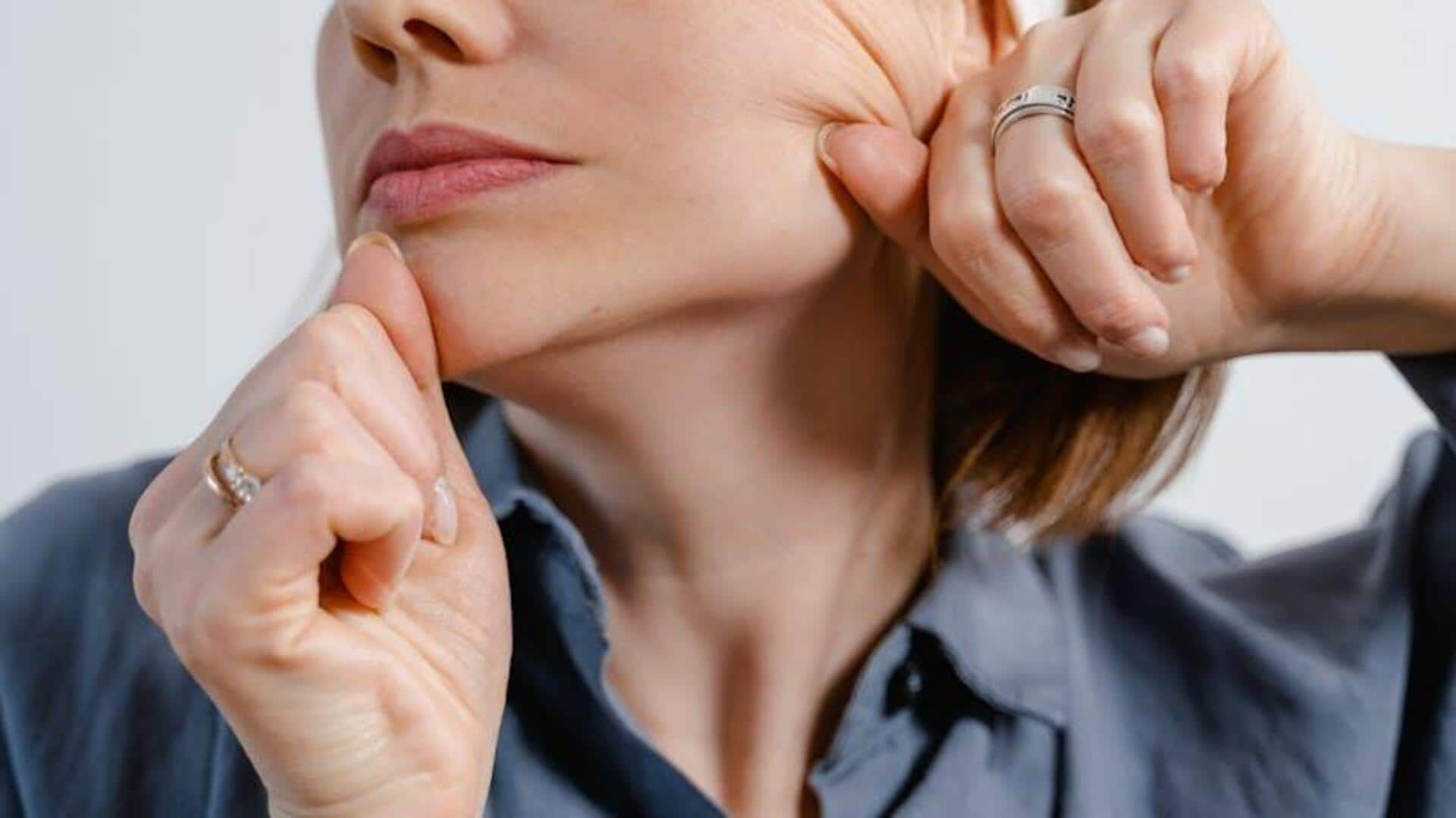
5 simple exercises for better jaw health
What's the story
The pterygoid muscles, specifically the medial and lateral pterygoids, play a crucial role in jaw movement. Strengthening these muscles can help improve jaw function, alleviate pain, and ultimately contribute to better oral health. This article provides a list of five effective exercises specifically targeting the pterygoid muscles. These exercises aim to improve mobility and function of the jaw by focusing on both stretching and strengthening techniques.
Jaw open
Jaw opening exercise
This exercise involves gradually opening the mouth as wide as you can without experiencing discomfort. Hold this position for approximately five to 10 seconds before slowly closing your mouth. Do this exercise 10 times. This exercise is beneficial for stretching and strengthening both the medial and lateral pterygoid muscles, which can help improve the mobility of your jaw.
Resistance open
Resistance mouth opening
To perform this exercise, position your thumb under your chin to create resistance as you open your mouth against it. The pressure applied by your thumb strengthens the muscles by making them work harder to open your mouth. Maintain each open position for three to five seconds before carefully closing your mouth. Doing this exercise 10 times a day can help build muscle strength over time.
Lateral movement
Side-to-side jaw movement
Open your mouth slightly and then move your jaw gently from side to side, without opening your mouth all the way. This exercise specifically targets the lateral pterygoid muscle, which is used for side-to-side movement of the jaw. Do three sets of 15 repetitions each day to make sure both sides of this muscle are strengthened equally.
Protrusion exercise
Forward jaw movement
Protruding your lower jaw forward, extending it out beyond your upper lip, and then retracting it back is an effective way to exercise both pterygoid muscles at the same time. This protrusion and retraction motion should be performed slowly and controlled, 10 times per session, pausing briefly in each position, to ensure optimal muscle activation.
Circular motion
Circular jaw motion
Doing circles with your jaw will ensure that muscle activity is distributed evenly among all parts of the pterygoids. Simply move your jaw in a circular motion clockwise for 10 repetitions and then repeat the same motion for 10 more repetitions in an anti-clockwise direction. Make sure to perform these movements gently to prevent straining the joints or muscles involved.